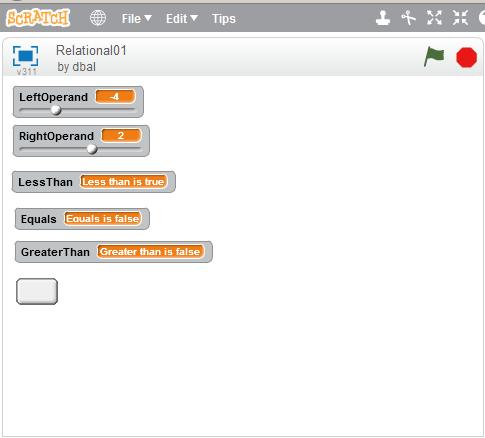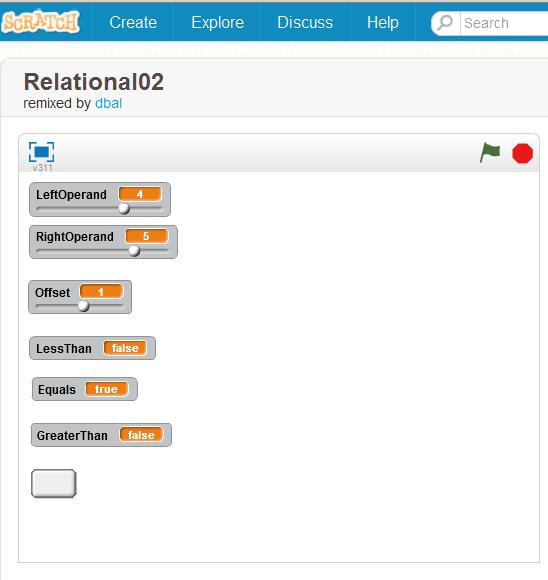| << Chapter < Page | Chapter >> Page > |
Once we do that, we will have finished the construction of the second script from the top in Image 4 .
Following that, we need to go through essentially the same process to construct the bottom two scripts in Image 4 , using the other two relational operators in Image 6 along with the variables named LeftOperand and RightOperand .
Image 8 shows a screen shot of the Stage for a given set of values for the variablesnamed LeftOperand and RightOperand .

The text showing in the bottom three variables tells us that for these values, the relationships among the values are as follows:
The value of the left operand (-4) is less than the value of the right operand (2).
The value of the left operand (-4) is not equal to the value of the right operand (2).
The value of the left operand (-4) is not greater than the value of the right operand (2).
If you move the sliders to change the values in the left and right operand variables and then click the button, you are likely to get different results.
A copy of this program has been posted online for your review (see Resources for the URL) . If you don't find the program using that URL, search the Scratch site for the usernamed dbal .
I encourage you to use the information provided above to write this program. Experiment with the code, making changes, and observing the results of yourchanges. Make certain that you can explain why your changes behave as they do.
Just for fun, see if you cause a short drum roll to be produced by your computer speakers each time the button is clicked.
I also encourage you to write the program described below.
Write a project named Relational02 that meets the following specifications:
This program illustrates the use of the following relational operators in addition to arithmetic operators:
<(less than)
= (equal to)>(greater than) This is an upgrade to the program named Relational01 .
The program creates the following six variables and a button and displays them on the stage as shown in Image 9 :

When the user clicks the green flag, the values of all six variables shown in Image 9 are set to 0.
The user slides the three sliders to set the values of LeftOperand , RightOperand , and Offset .

Notification Switch
Would you like to follow the 'Teaching beginners to code' conversation and receive update notifications?